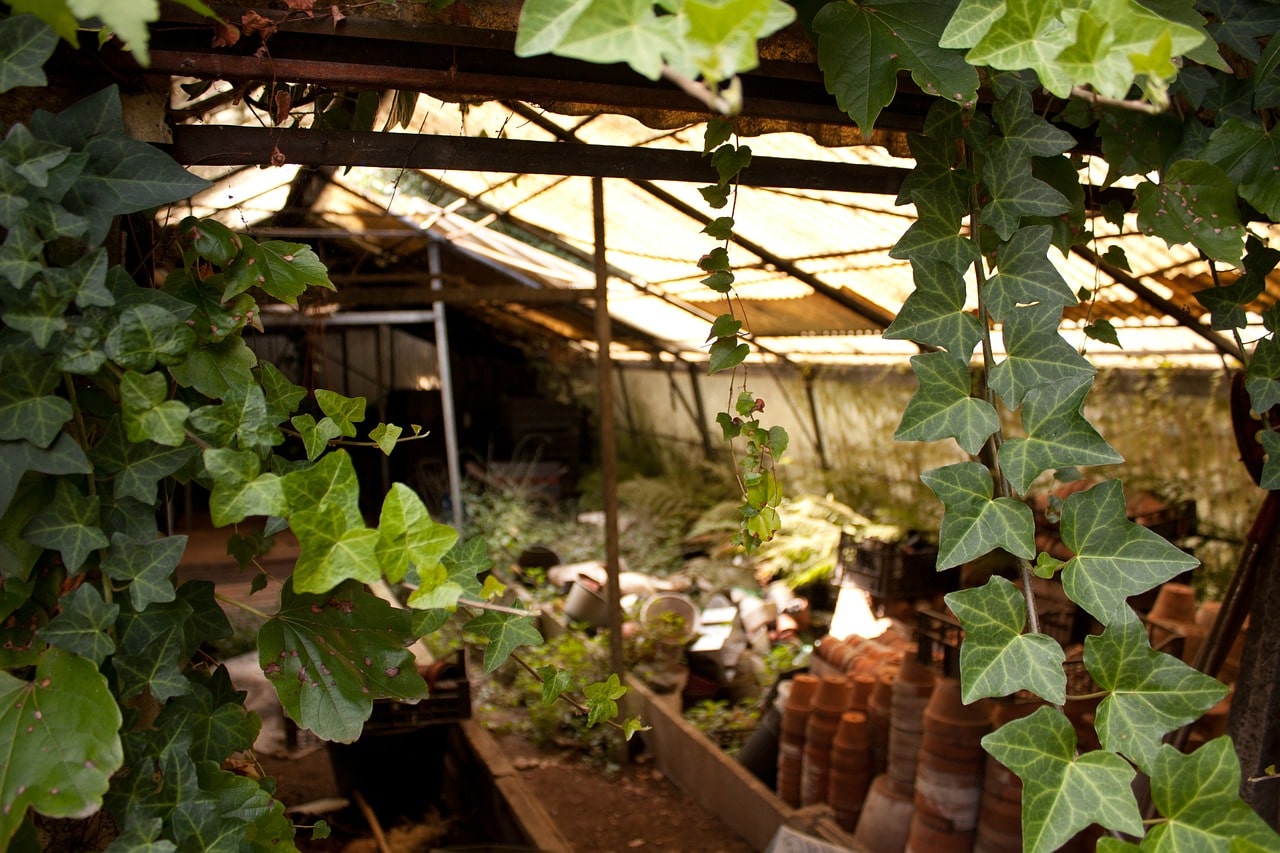It’s essential to know how to shade a greenhouse using paint, netting, and curtain. A 2016 study has shown how shading the greenhouse saves energy and water while also improving its microclimate. Additionally, the University of Massachusetts Amherst also noted that it effectively cools the greenhouse at low costs.
Shading the greenhouse doesn’t have to be complicated. Much like protecting the greenhouse from winds, light, and temperature are outdoor conditions that can affect the structure. Therefore, one must know how to preserve or reinforce the greenhouse in preparation for environmental challenges.

How To Shade A Greenhouse For Beginners
Shade paint
One of the quickest ways to shade a greenhouse is by using shade paint. This is a good option if your greenhouse production space has no retractable curtain. You’ll apply it similar to a regular paint outside of the glass when the season requires you to.
You don’t have to worry about how long shade paint lasts because it is resistant to showers, and you’ll eventually wash it off anyways once the season ends. The only potential disadvantage with using a shade paint is that it’s laborious to apply and remove. On the bright side, it is not an expensive material, which is why you can add more layers as needed or when the paint wears off.
What is whitewash?
When researching for shade paints, you have probably heard of whitewash. You can use this term interchangeably with shade paint since it is the shade compound per se. Therefore, if the shade compound is at a high dilution, it provides less shade, while a high concentration of the compound means high shade.
The ideal shading factor for whitewash would be 40% because too much can decrease the light conditions and negatively affect the plants. You might also consider other materials that reduce the infrared light without affecting plants’ light level requirements. With proper use, shade paint should reflect sunlight and scatters the light well indoors.
How to apply shade paint?
The most common way to apply shade paint is by putting it outside of the dry greenhouse glazing material. This way, the sunlight will reflect on the paint and prevent it from entering the greenhouse and increasing the temperature. You can apply the shade compound with a brush, sprayer, or roller in the morning or late afternoon.
However, you want to ensure that there will be no rainfall on that day because if the paint gets exposed 24 or 12 hours after a new application, it may wash off. Afterward, you can wash off the paint in fall to ensure that the plants will get their light needs during the low light seasons.
Shade netting
External and internal shade nettings are also useful to protect the greenhouse from harsh sunlight. Inside, you can add a plastic weave shading by securing it with clips onto the frame. This way, you can be confident that there will always be a shade inside than with outdoor shades that weather can wear off. On the other hand, you can also clip the same material or hessian over the roof outside to serve as external shade netting.
Shade curtain
Michigan State University recommends an easy way to control high temperatures and conserve water by using retractable shade or energy curtains to minimize radiant heat loss. Compared to the previous two solutions, shade curtains will be usable both at night and periods of high light. This is why those in the upper Midwest start using this shading technique late April or early in May.
There are many materials that you can use for shade curtains. They include woven or knitted fabrics made of saran, polypropylene, polyethylene, and polyester. You can choose the degree of shading they provide and even add ultraviolet stabilization to help it last longer.
To choose a material, you have to weigh some pros and cons. Saran needs to have slight sagging during installation because it shrinks, but it is fireproof. Polypropylene is durable and resistant to abuse and wear and tear, while polyethylene is resistant to mildew and won’t fray when cut.
The best thing about shade curtains is that you can open or close them as needed. You can also choose if you want them gutter-to-gutter or truss-to-truss when installed. Therefore, you have complete control of its configuration.
Importance Of Shading A Greenhouse
Shading a greenhouse would help maintain plant productivity since high temperatures affect photosynthesis and respiration. Some crops like tomatoes will even be affected if they get saturated by light. You might even find it amazing how shading can supplement evaporative cooling during warm weather and reduce the risk of burning by maintaining plant leaf temperature.
Conclusion
The greenhouse provides a stable growing environment for our plants, but we have to reinforce it to adjust to the external conditions to do its job well. One example is when the sun gets too harsh, so it’s crucial to know how to shade a greenhouse correctly. You can do this by applying a shade paint, shade netting, or shade curtain.
Out of the three, the shade paint is the cheapest solution but applying and removing it is laborious. On the other hand, a more comfortable and adjustable way to shade a greenhouse is installing a shade curtain. It minimizes radiant heat loss that it can even double as an energy curtain as a bonus.
